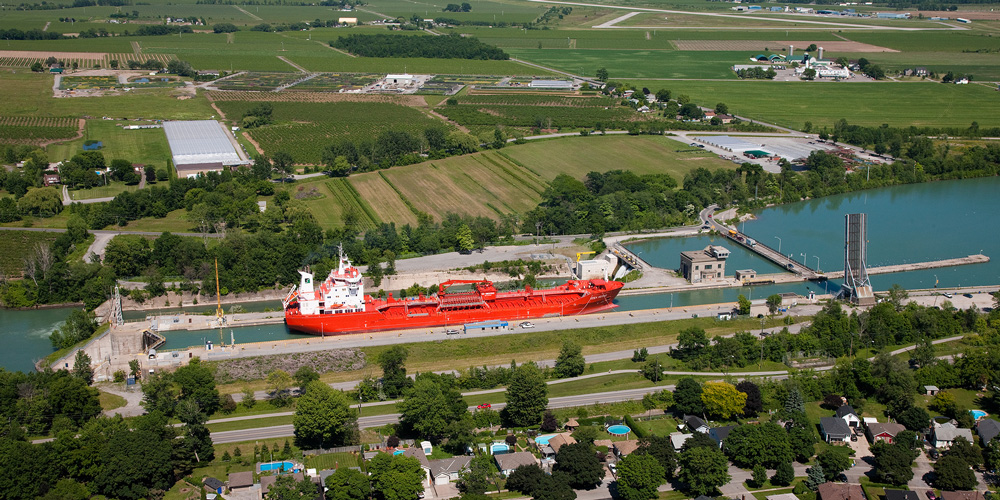Great Lakes Seaway Trade Mission Promotes Shipping Opportunities to Europeans
October 21, 2005
St. Catharines, October 21, 2005 — The Great Lakes St. Lawrence Seaway Trade Mission delegation ends its weeklong marketing effort today pitching its inland waterway to European shipowners and companies as a viable transportation route for bulk cargo as several Gulf Coast ports continue struggling to return to a pre-Hurricane Katrina level of operations. Seaway Corporation leaders, Albert Jacquez, Administrator of the U.S. Saint Lawrence Seaway Development Corporation and Richard Corfe, President of the Canadian St. Lawrence Seaway Management Corporation, are leading marine executives from throughout the Great Lakes region on a week-long trade mission to England and Germany.
Because Gulf ports were the primary means for handling agricultural exports and steel imports into the United States, a capacity shortfall has developed that may not be filled entirely by rail or truck. The Seaway System’s principal cargoes of steel and grain are precisely those whose transport is significantly impacted by the hurricane damage. Recent information from brokers and shippers indicates that, in many instances, freight rates in the Seaway are now competitive with Gulf rates.
“We anticipate additional cargo as a result of the logistical problems currently facing the Gulf ports and want to apprise shippers of the opportunity to move cargo through the Seaway System,” said Albert Jacquez, Administrator of the U.S. Saint Lawrence Seaway Development Corporation. “Any increased demand can be met by the Seaway, its Seaway-size vessels and integrated tugs and barges.”
Jacquez said he was optimistic that these meetings will lead to additional new business for the region.
In London, the Seaway delegation explored new shipping opportunities with Corus, an international metal company and one of the largest shippers of steel into the Great Lakes Seaway System. The delegation also made presentations to the International Chamber of Shipping, the United Kingdom Chamber of Shipping, and the International Association of Dry Cargo Shipowners.
In Germany, the delegation met with the Briese Group which manages more than 70 multipurpose and container vessels and followed with discussions with Beluga Shipping’s fleet. The company’s ships feature multipurpose heavy lift carriers and container feeder vessels of the highest ice class.
Richard Corfe, President and CEO of the Canadian St. Lawrence Seaway Management Corporation, noted the importance of educating the European shipping interests on Seaway system improvements as well as its record of operations.
“Our system enhancements, our new cargo incentives and the Hwy H20 marketing initiatives make the Great Lakes Seaway System an ever more attractive and vital shipping route,” said Corfe. “We hope to capitalize on the system’s strengths in these Trade Mission meetings.”
The Seaway mandates Automatic Identification System navigation technology usage aboard ships trading on the waterway, improving safety and security. The waterway recently increased vessel draft by three inches permitting typical Seaway-size ships to carry an extra 100 tons per transit. System capacity can handle double last year’s 45 million metric tonnes. Reliability is excellent, with system uptime consistently highter than 99.5%, and marine employees of the Corporations boasting ISO 2001 certifications.
This year’s trade mission marked the 28th since they began two decades ago. The trade missions facilitate face-to-face contact with senior maritime industry leaders and decision-makers to promote greater use of the Great Lakes St. Lawrence Seaway System. In addition to the Administrator of the U.S. Seaway Corporation and the President of the Canadian Seaway Corporation, the 22-member delegation is comprised of some of the largest port and terminal operators from both countries, shipowners and operators, cruise industry representatives, and maritime trade specialists from throughout the Great Lakes region.






